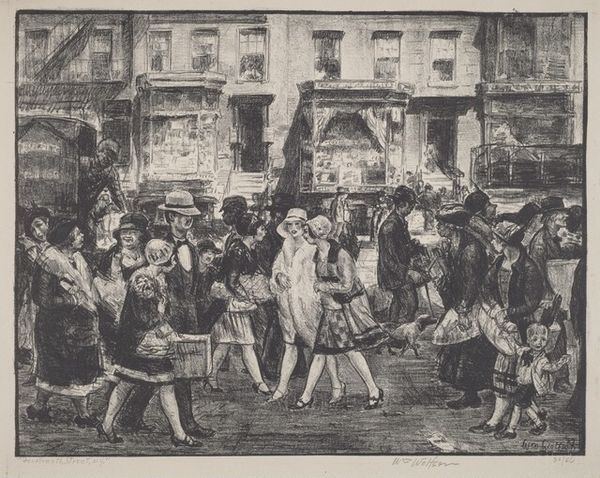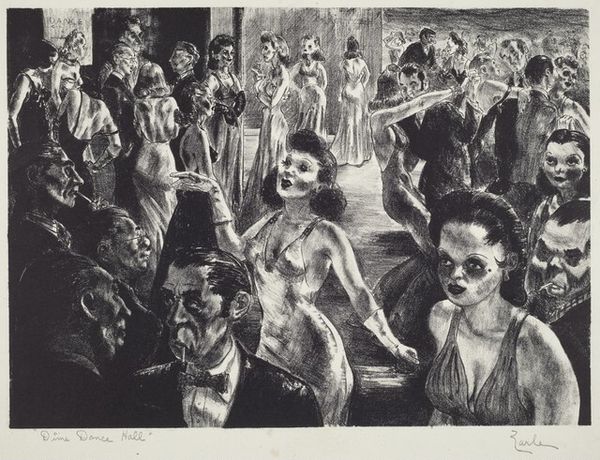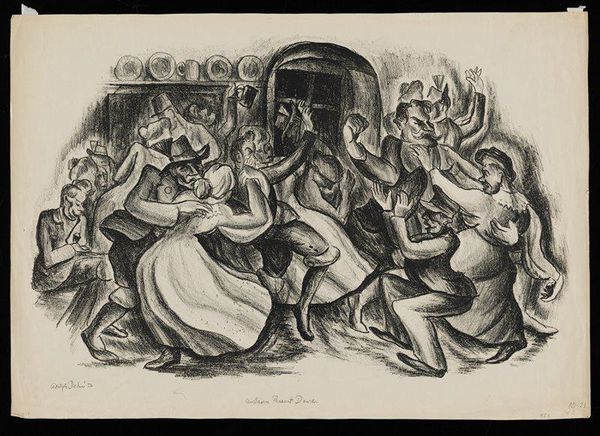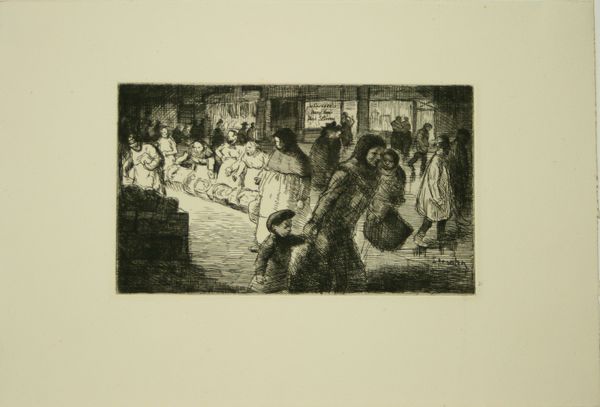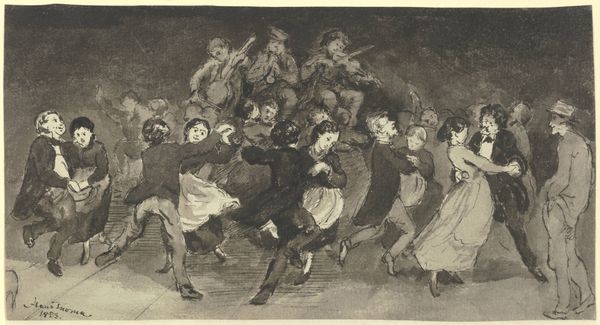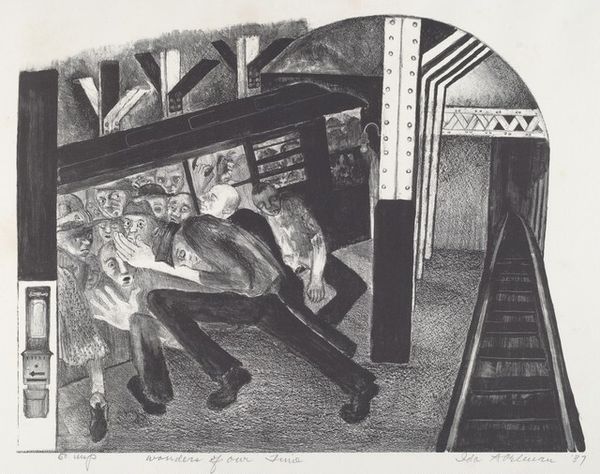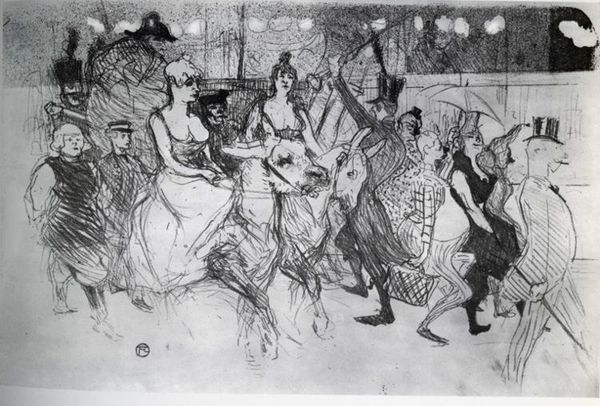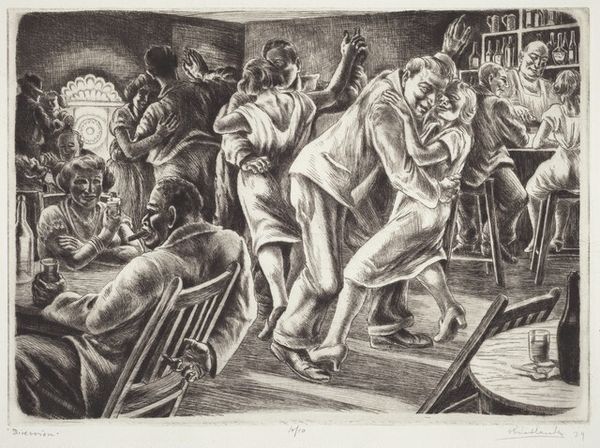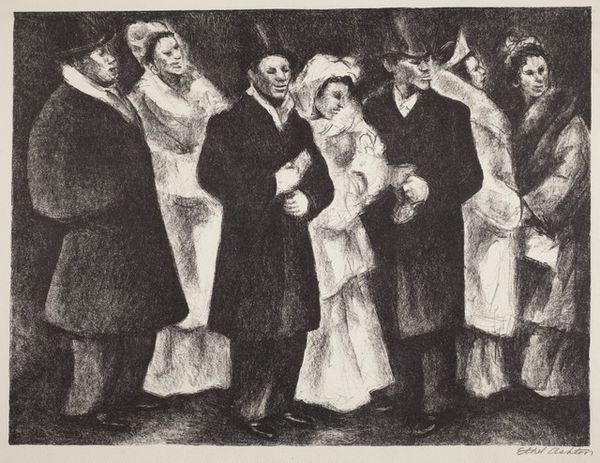
drawing, print
#
drawing
# print
#
social-realism
#
group-portraits
#
surrealism
#
portrait drawing
#
genre-painting
#
realism
Dimensions: Image: 363 x 460 mm Sheet: 404 x 569 mm
Copyright: National Gallery of Art: CC0 1.0
Curator: This drawing, which dates from around the 1940s, is titled *Klein’s Outer Sanctum* by Anne Eisner. It depicts a crowd of figures entering what appears to be a store's dressing room. Editor: My first impression is one of slight claustrophobia. The density of the figures, rendered in grayscale with sharp, almost frantic lines, evokes a feeling of being overwhelmed in a crowd. Curator: It does have that feeling of urban tension. Eisner’s style is often associated with social realism. She seems to capture a specific mood related to consumerism or perhaps even social conformity during this period. What strikes you about her formal approach? Editor: The stark contrast is interesting. Look how she uses light and shadow to create depth, especially around the dressing room entrance, pulling the eye. Note also how the details become progressively fainter the further back into the pictorial space you go; in some areas, there is barely even the hint of an outline, whereas foregrounded figures such as the girl and boy walking into frame in the bottom left are drawn with significant levels of dark detail. It lends a rather theatrical flair to an ostensibly realist scene. Curator: The theater of modern life! And how the figures, mostly women and children, are all headed towards this dark aperture labeled “Dressing Room.” Think about the psychology of that space, where identities are tried on and discarded. Consider the text above which reads: “Tags must be left on,” a chilling suggestion of impermanence within modernity's ever-shifting identities and constraints. Editor: I agree. There's definitely a surreal undertone here as well, a critique perhaps. Consider the semiotics, all these little symbols – the clock above, the lettering—each pointing to different levels of cultural anxiety about modernity, the market, and its effects on identity. Curator: It invites us to consider what sacred spaces—sanctums—were being forged within modern culture. What rituals did they imply, what did these sites suggest about the individual's shifting relationship to the masses? Editor: Right. The composition itself suggests this sort of uneasy relationship with that culture; so carefully controlled with clear lines to give an air of realism, yet the lack of shading suggests this sense of unease. A fascinating work! Curator: Absolutely. Eisner provides so much material to consider, making us think about ourselves and others within these "outer sanctums."
Comments
No comments
Be the first to comment and join the conversation on the ultimate creative platform.
